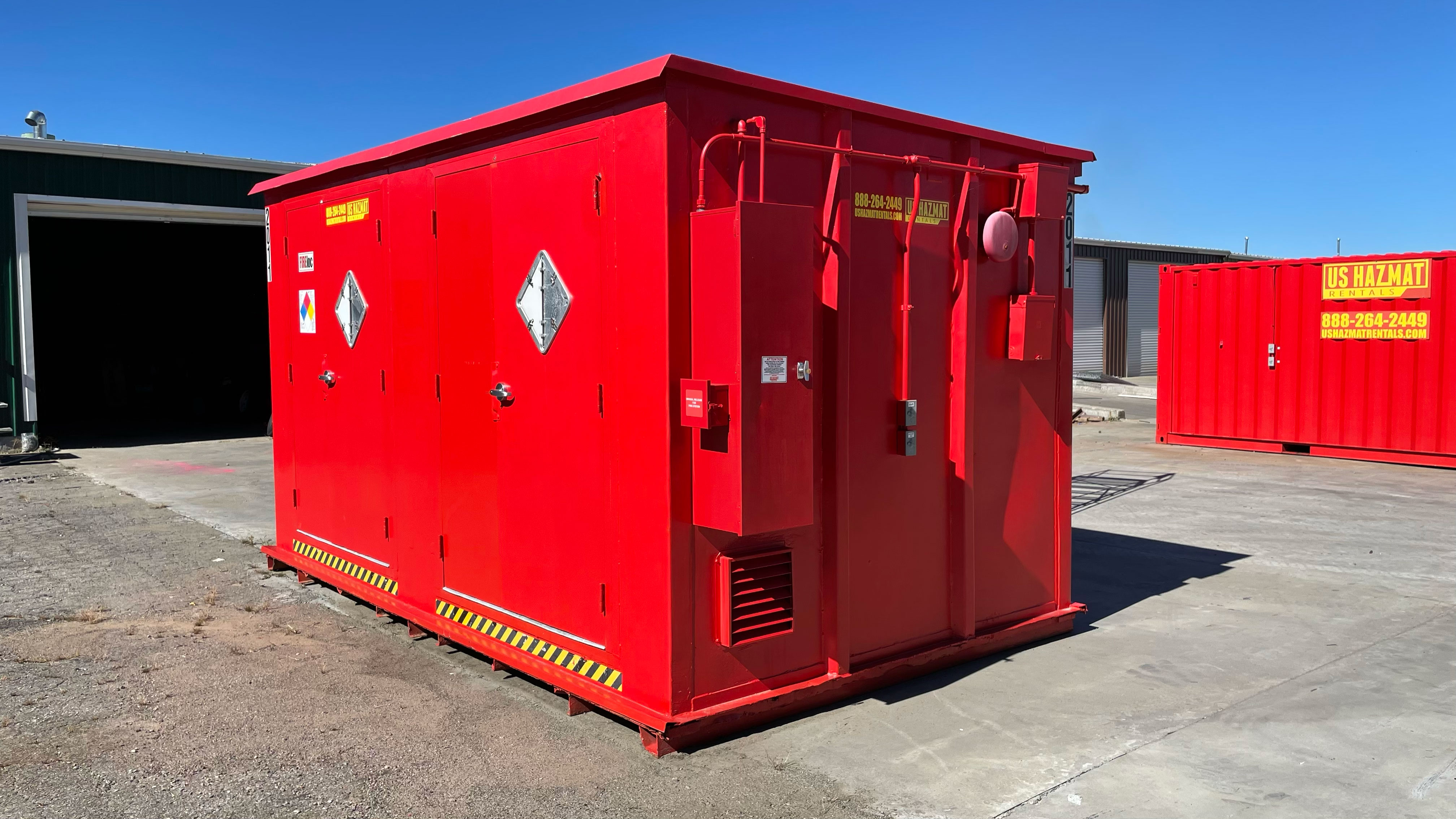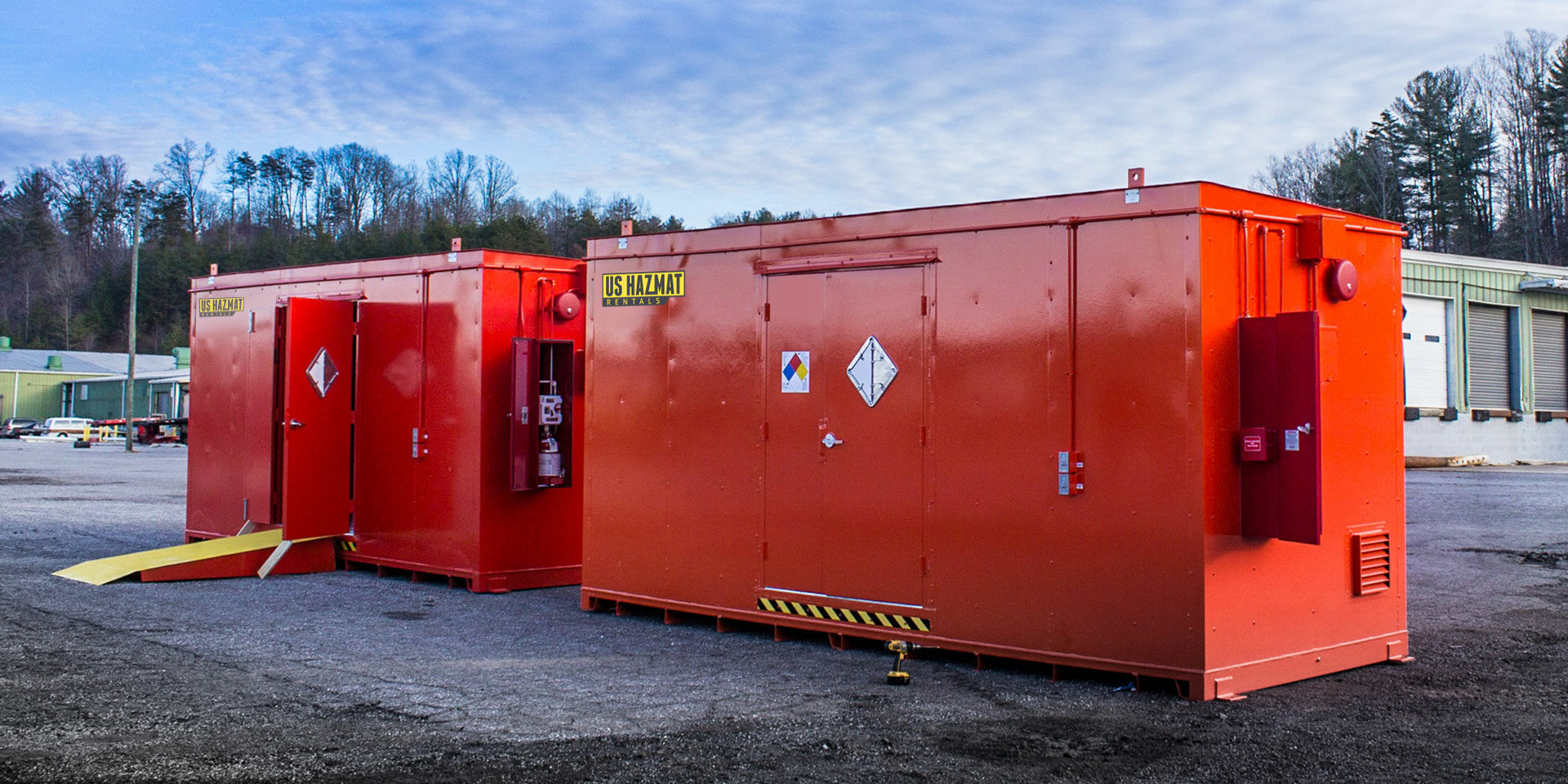Lithium-ion battery waste storage is polarizing noncompliant companies. While the lithium-ion battery market continues to grow, compliant disposal practices are overloading vulnerable ecosystems. Lithium-ion battery waste is discarded batteries and cells containing toxic materials, including cobalt, nickel, and manganese. These materials are flammable and corrosive, requiring consistent vigilance and safe handling. Defining regulations and hazard classifications complicate already rigorous battery storage laws. Some municipalities classify all lithium-ion batteries as hazardous waste, confusing companies on which chemical storage locker to choose for compliant disposal. US Hazmat Rentals offers temporary turnkey and affordable fire-rated protection for lithium-ion battery waste storage and disposal. Don’t allow noncompliant battery storage to deplete your operating budget. Avoid hefty fines and civil penalties with fire-rated and climate-controlled protection today.
Although OSHA doesn’t specify lithium-ion battery storage regulations, the agency interprets the Hazard Communication Standard to include them, including developing Safety Data Sheets. An SDS provides detailed physical properties, listings of incompatible materials, first-aid measures, and compliant storage recommendations for each hazardous material. Moreover, an SDS for each hazardous material used or stored onsite should be readily available for quick reference and streamlined storage. Employers must also correctly label lithium-ion batteries and waste with the correct hazard signage, alerting personnel of battery risks.
Why Are Lithium Ion Batteries Considered Waste?
The Resource Conservation and Recovery Act defines most lithium-ion batteries as hazardous waste due to ignitability and reactivity. Companies handling and storing lithium ion battery waste should always store batteries and hazardous byproducts in a centralized storage locker with adequate ventilation and climate control. Although the RCRA doesn’t make a delineation between lithium ion batteries and waste, our NFPA 30 compliant storage lockers can accommodate various sized stockpiles and individual waste components safely, minimizing inadvertent exposure to errant sparks, heat, and moisture. Furthermore, compliant storage prevents thermal underway, which occurs when a battery heats up uncontrollably leading to fires or sudden explosions. Always store batteries with at least a partial charge, and cover battery terminals with tape or non-conductive material to prevent accidental contact.

Always Store Lithium-ion Battery Waste in a Cool, Dry, and Well-Ventilated Area. Store Batteries Separate From Incompatible Materials, Such as Flammable Materials, Strong Oxidizing Agents and Combustibles. Regularly Check Batteries for Damage. Remove Batteries From Devices When Not in Use.
Proper Lithium-ion Battery Waste Disposal
Lithium-ion battery storers should never dispose discarded power cells in regular household waste receptacles or recycling bins. Companies should take discarded or damaged battery blocks to designated recycling centers or hazardous waste collection points. Manufacturer facilities, such as electronic companies, electric car producers, and battery assemblers could store discarded or defective batteries in a federally compliant fire-rated chemical storage locker until safe extraction to a designated collection facility. Secured front-loading storage lockers allow for the considerate deposit and removal of lithium-ion battery waste products in a controlled and isolated hazmat warehouse away from vulnerable personnel, equipment, and noncompatible materials.
Battery Storage Limits
OSHA recommends limiting discarded batteries and fully-charged block to minimal payloads. Inventory specialists should also monitor flammable and toxic gas accumulations in concentrated storage areas. Moreover, employers must train employees on proper battery handling and storage. Never mix battery types in recycling or storage facilities. Developing an emergency plan of action can also diminish accidental discharge effects and inadvertent contamination.






